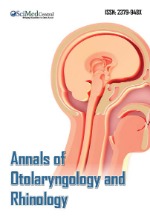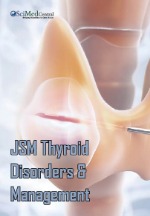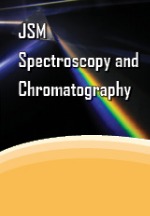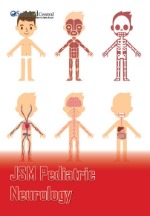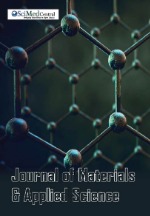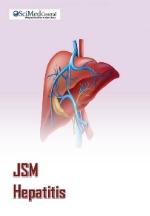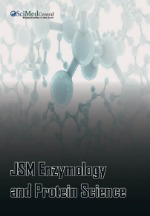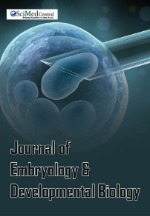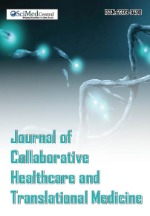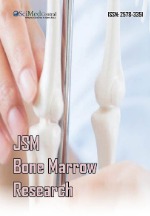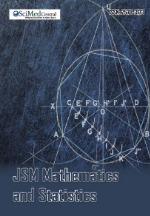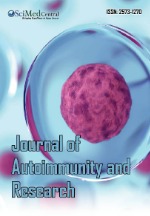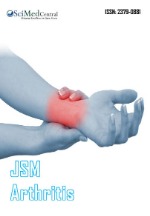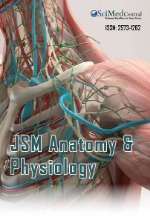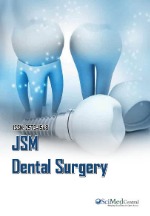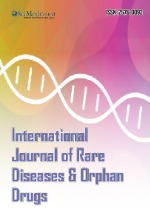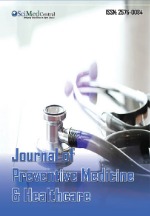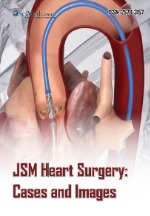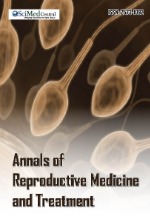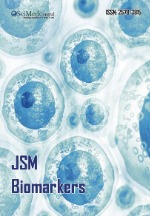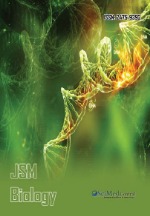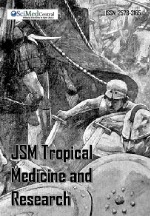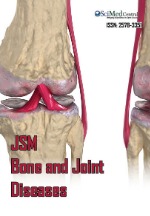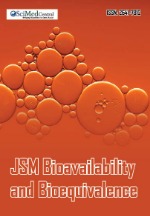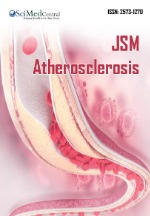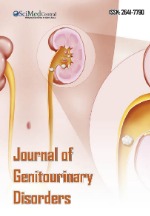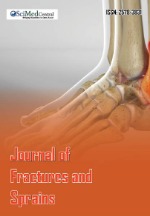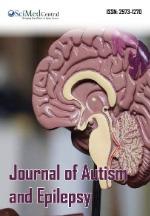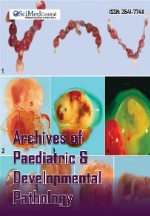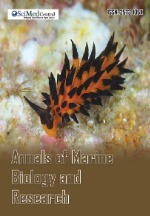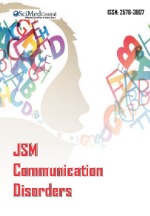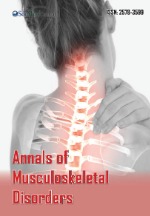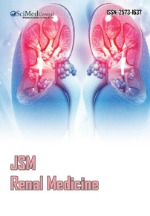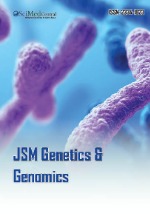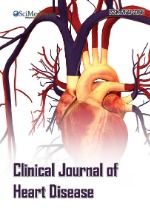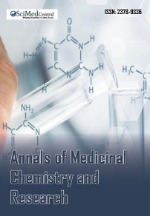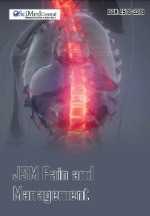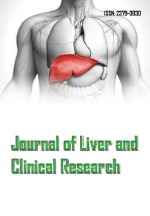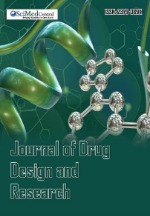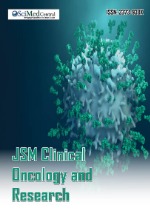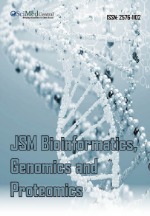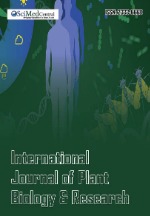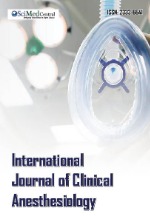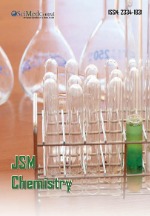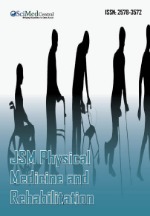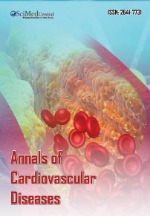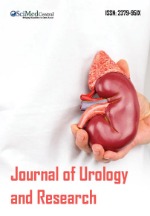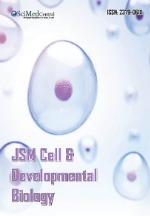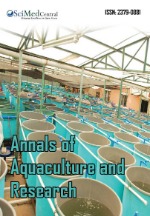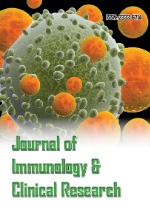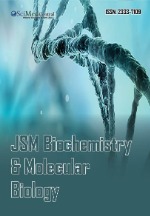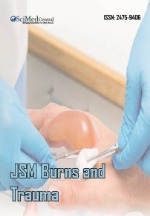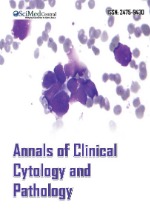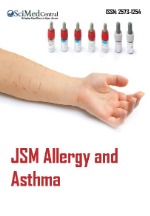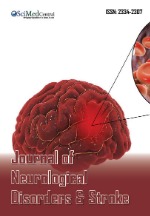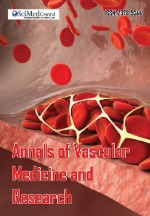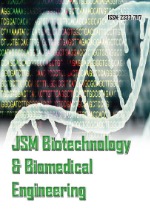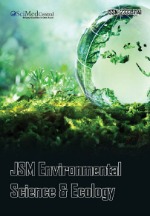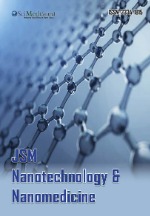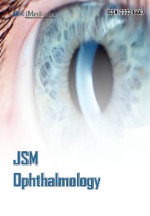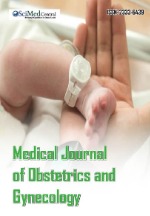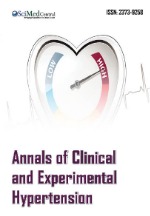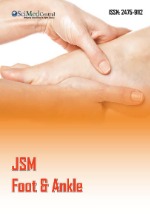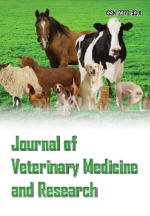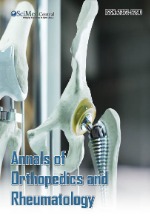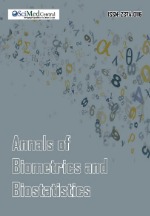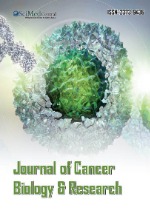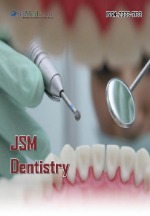Potential Application of IL@ZIF-MOF Composites for Lignocellulosic Biomass Valorization: Recent Update
- 1. Faculty of Applied Sciences, Durban University of Technology, South Africa
Abstract
The intriguing properties like large surface area, tunable pore size, thermal and chemical stability have garnered significant interest to combine Metal- Organic Frameworks (MOFs) with ionic liquids (ILs) to create IL@ZIF-MOF composites. These composites have been well reported to excel in applications such as CO2 capture, catalysis, and as hybrid solid electrolytes due to their enhanced ionic conductivity. This integration leverages the benefits of both materials, enhancing catalytic stability and selectivity while providing environmental benefits. Recent advancements have not only demonstrated breakthroughs in the synthesis of IL@ZIF-MOF composites but have also highlighted their potential gap in addressing the challenges of biomass valorization, specifically, a potential to improve the efficiency and yield of biochemical production from lignocellulosic biomass—a critical source of renewable chemicals.
Graphical Abstract
KEYWORDS
- Ionic liquid (IL); Metal-Organic Framework (MOF); IL@ ZIF-MOF composite; Biomass; Biochemical
CITATION
Tokoyi V, Mthembu LD, Deenadayalu N (2024) Potential Application of IL@ZIF-MOF Composites for Lignocellulosic Biomass Valorization: Recent Update. Chem Eng Process Tech 9(2): 1094.
INTRODUCTION
More environmentally friendly energy sources are currently being investigated and studied; one such source is the commercial conversion of biomass into useful energy and valuable products (Babu, Jojo) [1]. This route can potentially bridge the gap between renewable resources (biomass), fuels, and chemicals that our society needs [2]. Tons of biomass are generated each year, mostly lignocellulosic biomass, and it is regularly reported that this material can be valued to produce and recover sugars that can be catalytically converted to produce biochemicals with major industrial significance [3,4]. This is associated with its abundance, low cost, superior susceptibility in several solvents [4], and the valuable products that can be derived from the recovered reducing sugars like lactic acid (LAC), 5-hydroxymethylfurfural (HMF), levulinic acid (LA), and sorbitol, just to name a few [4].
One of the challenges during the biomass transformation is to find a cheap catalyst that can be manufactured industrially, reusable, stable, environmentally benign, and more selective towards the targeted product. Oozeerally, Ramkhelawan [2], previously reported that some chemical/catalytic reactions can lead to various side reactions, producing by products which are polymeric species commonly referred to as humins. Various technologies like alkaline [5,6], enzymatic [5,7], heavy metal salts [8-10], or acidic [11], processes have been applied for and to improve biomass transformation to produce biochemicals, but the most critical and challenging task associated with the afore mentioned during conversion to produce biochemicals is the solubilization of precursor saccharides into the reaction medium and to maximize production based on feedstock loadings [12].
The serendipitous discovery of ILs and ZIF-8 MOF have proven otherwise very efficient alternatives compared to the above-mentioned. This is associated to the appealing properties like good solubilization (observed in ILs) towards cellulose materials [13,14], BrØnsted/Lewis acidity or active sites useful for sugar transformation (observed in both ZIF-8 MOFs and ILs), and thermal stability [15]. The application of these afore mentioned technologies, and IL@ZIF-MOF composites for LCB valorization and transformation of the recovered sugars to platform chemicals is reviewed below. The key goal in utilizing these techniques is to deal with biomass resistance that result from lignin sheathing in conjunction with hemicellulose sections, cellulose crystallinity and degree of polymerization [16], toxicity [17], recovery, re-usability, cost, degradability [18], and chemical stability [19,20], while keeping a process that is both economical and efficient in terms of using green energy [1,20] and achieving Green Chemistry morale.
Ionic Liquids
ILs have a long history of use in organic synthesis, catalysis, and biocatalysis as reaction media. They have therefore been effectively utilized to substitute conventional solvents used in a range of synthetic and industrial processes and are particularly effective in dissolving polysaccharides and other biopolymers [21]. They have also been considered as novel materials with great potential in different disciplines. They are molten salts composed of asymmetric organic cations and organic or inorganic anions, with a conventional melting point usually below 1000C. Compared to organic solvents, these materials present interesting physical and chemical properties like negligible volatility, thermal stability, electrical conductivity, high CO2 solubility and adsorptivity, having been intensively studied as alternative absorbents and catalysts for performance improvement of gas absorption and biomass valorization operations [22]. These materials are referred to as “designer solvents” given the unlimited number of potential structure combinations generated by the choice of anions and cations that allow tailoring their chemical interactions and physicochemical properties. Nowadays, besides their role as alternative absorbents in gas capture/separation, catalyst in biomass valorization, ILs have remarkable properties like ionic and thermal conductivity, non-flammability, antimicrobial [23,24] etc., they are continuously being studied and synthesized to be used in a variety of fields [25], for different applications.
Metal-organic frameworks
MOFs constructed from metal ions/clusters and organic linkers have attracted attention as heterogeneous catalysts because of their superior surface area, tuneability, and intrinsic Lewis acidity [4], to deal with the limitations of homogenous catalysts. These compounds have been widely examined for a large variety of applications like gas storage/separation, catalysis, adsorbents, drug delivery, sensing, conductivity, and biomedical sensing [26]. This is associated with several benefits such as reusability [2], and stability with the probable ability to host functionalities that can be easily incorporated in MOF compounds via several methods, including pore encapsulation or impregnation, metal-chelating, organic linker modification, and melt-quenched MOF glasses [2,4,27].
IL@ZIF-MOF composites
Since the serendipitous discovery of utilizing ILs and MOFs in different applications, several studies have focused on creating composite materials with enhanced structural and functional features compared to their precursor materials. Although ILs have many advantageous properties by themselves, which make their usage preferable in different studies, their application is limited in real processes due to their liquid nature. Moreover, they have high viscosities and low diffusion coefficients [17], which are also problematic, but alternatively they can be confined in porous materials, such as MOFs to overcome these drawbacks. The most important advantage of MOFs among other porous materials is that their pore sizes/shapes can be tuned easily by varying the organic linkers and metal centers [28]. Combining ILs with MOFs has proven to be favorable for several applications, such as catalysis and gas adsorption/separation rather than using bulk ILs which is costly [26]. This was achieved by introducing ILs into the porous framework of MOFs, using a technique called “IL incorporation by wet-impregnation method”, with an aim to combine the tunable physicochemical properties of ILs within the MOF structures [26,29]. The resultant characteristics of these composite materials have been shown and reported to have better adsorption and separation performances and show remarkable ionic conductivity owing to the combination of the favorable properties of both ILs and MOFs [26].
Construction of IL@ZIF MOF composites
Ionothermal, and post-impregnation (consisting of the following: (i) wet impregnation, (ii) capillary, and (iii) ship- in-a-bottle) methods have been used when constructing these composites, but the ionothermal method has been proven to be complicated because of the heat requirement that can later result in the decomposition of the organic linkers coordinated to the metal centers in ZIF-MOFs [30]. When constructing IL@ZIF-MOF composites the wet impregnation method is the most currently used alternative [25-27,31-34], where an IL is incorporated in the ZIF-MOF structure in the presence of volatile solvents (commonly acetone and several alcohols) after both ZIF-MOFs and ILs have been synthesized (post-impregnation). This is a rather straightforward and less complex method that requires less compatibility between both the ZIF-MOF and IL used, and more work is continuously being reported.
In the study conducted by Ferreira Ribeiro et al. [35], ten IL@ ZIF-8 MOF composite materials were constructed using a wet impregnation method (as per Scheme 1),
Scheme 1: Preparation of IL@ZIF-8 MOFs
where ZIF-8 MOF as the pristine material was combined with imidazolium based ILs. The required amount of IL was weighed and dissolved in acetone, and a degassed ZIF-8 MOF was added to the contents, capped and maintained at room temperature overnight. De-capped and maintained at room temperature for acetone evaporation, and later the temperature was adjusted to 70°C for further traces of solvent to evaporate.
A distinct approach using both wet-impregnation and solvothermal methods to prepare IL@ZIF−MOF composites was explored by Wang Meng et al. [36], where organic cation (from IL) was confined into the Cu−BTC MOF pores prepared via a hydrothermal process, where copper(II) nitrate trihydrate [ Cu(NO3).3H2O] was reacted with trimesic acid (H3BTC) in ethanol. The synthesis of the ILs namely 1-propionic acid-3-vinylimidazolium bromide [VMCA] [Br], 1-aminoethyl-3-vinylimidazolium bromide [AnEtIm] [Br], 1-vinyl-3-butylimidazolium bromide [VBIm] [Br] and 1-vinyl- 3-ethylimidazolium tetrafluoroborate [VEIm] [BF4] were obtained from reacting vinylimidazole with 3-bromopropionic acid, bromobutane, bromoethylamine, or fluoroboric acid in the presence of ethanol at 80 °C. [VMCA]@Cu-BTC, [AnEtIm]@ Cu-BTC, [VBIm]@Cu-BTC and [VEIm]@Cu-BTC composites were prepared by mixing [VMCA] [Br], [AnEtIm] [Br], [VBIm] [Br] or [VEIm] [BF4] with Cu-BTC ultrasonically in methanol to afford a suspension, and the recovered precipitate afforded the composites.
Philip and Henni et al. [32], prepared and reported IL@MOF- 177 composites by incorporating amino acid-functionalized ILs (AAIL) namely 1-ethy-3-methylimidazolium glycinate [Emim] [Gly] and 1-ethyl-3-methylimidazolium alaninate [Emim] [Ala], incorporated into highly porous MOF-177 using the wet impregnation approach. A desired amount of [Emim] [Gly] or [Emim] [Ala] was dissolved in methanol and effectively embedded within the porous MOF-177 by adding the contents to the pre-weighed and degassed material. The obtained mixture was solvent evaporated and the created composite afforded AAI@MOF-177 composites.
Biomass valorization
Successful biomass valorization to produce platform chemicals mostly requires acidic media [37]. This is due to the recalcitrant structure of the material which is composed of lignin, hemicellulose, and cellulose which have different susceptibilities during pretreatment [38,39]. In pursuit of producing hexose derivative compounds, removing the lignin first using acidic pretreatment and bleaching is the most common approach [40,41]. This is then followed by depolymerizing hemicellulose (consists of side chains and more crystalline cellulose) to monomers, then a cellulose-rich material is recovered and converted into biochemicals [as per Figure 1].
Figure 1: Biomass valorization process
Catalysis of biomass valorization using ILs and ZIF MOFs
Biomass transformation is a set of hydrolysis, dehydration, reduction, and isomerization processes where it has been demonstrated that a broad use of catalysts is feasible [42,43]. This significant breakthrough is based on the specific combination of anions with cations (IL pretreatment) which results in overall acidity or basicity properties of the compounds, and metal centers coordinated to organic linkers (ZIF-MOFs) that produce acidic bifunctional (Lewis and BrØnsted acidity) catalyst [2,44-47]. In the IL pretreatment process, the ions interact with ester linkages between lignin and hemicellulose, forming ion-dipole bonds that cause a split and breakdown of lignin H?bonds [48,49]. This is then followed by further cleavage of the inter-units (H?bonds) within the hemicellulose polymeric network, solubilizing and reducing the intact structural recalcitrant that decreases the cellulose crystallinity [41,50]. Cellulose is recovered by ions further interacting with the O and H?atoms of the cellulose- hydroxyl moiety within its network, where the paired ions act as both electron donors or acceptors and cellulose-hydroxyl moiety as electron pair donors [51,52].
The use of ZIF-MOFs as heterogeneous catalysts in biomass valorization and transformation is considered a feasible approach as they consist of either or both Lewis or BrØnsted acid sites caused by the type of metal nodes and functional groups within the organic linkers [1,53]. These acid sites are useful when producing biochemicals of small hydrocarbons from cellulose biomass. For example, a BrØnsted acid-catalyzed cellulose biomass hydrolysis can produce glucose, Lewis acid-catalyzed polymerization of glucose produces fructose, and BrØnsted acid-catalyzed fructose yield 5-Hydroxymethylfurfural (5-HMF), and Levulinic acid (LA). Integrating compounds with acidic properties, porosity, surface area, and thermal stability to produce composites that can potentially be used for biomass valorization, can be a favorable route especially now that these types of materials have been previously shown to possess enhanced gas adsorption properties [54,55], and as a result, it is possible that the same can be observed when applied in biomass transformation to produce biochemicals owing to their overall properties.
Application of IL@ZIF-MOF composites
Several investigations on eco-friendly materials showing high reactivity and selectivity are continuously being reported [55]. Application of ZIF MOFs and ILs separately as catalysts, ecological solvents, gas storage, electrochemical reaction, adsorbents [56,57], etc., have been explored and reported to both share similar properties that make them useful and applicable in similar fields, but some hurdles [Figure 2],
Figure 2: Limitation experienced when using IL or ZIF-MOF compounds.
are also experienced [3,55,58-62]. As a result of their liquid nature, high viscosities, and low diffusion coefficients of ILs, their application or usage in real processes like packaging, recycling, portability, etc., is limited; hence, the alternative is to confine or incorporate their cation–anion paired structures into the easily tunable pores of porous ZIF-MOFs materials, producing stable composites suitable for several applications. [26,55,63].
Combining both ILs and ZIF-MOFs to produce IL@ZIF-MOF composites is continuously being reported and considered favorable in several applications like gas adsorption/separation (mostly used), catalysis, and energy storage [Figure 3],
Figure 3: Exploration of IL@ZIF-MOF composites in varied areas.
rather than using these compounds separately [25,26,29,31,55]. Several studies on IL@ZIF-MOF composite application have mostly been on gas adsorption/separation and date back to 2006 [55], and in 2019 for potential energy storage [31], but to our knowledge none for biomass valorization.
Gas Adsorption/separation: Most of the constructed composites using the wet impregnation method have been evaluated for CO2 capturing and electrolytes in metal ion batteries [33]. Chen Hu et al. [64], constructed an IL-MOF composite called IL/IRMOF-1 by incorporating 1-n-butyl-3-methylimidazolium hexafluorophosphate [BMIM][PF6] into Zn4O(BDC)3 MOF pores. This derivative was used for CO2 capturing in a CO2/N2 mixture, and this compound showed more selectivity towards CO2 adsorption. This was attributed to the [PF6]- anion shown to be more confined in the metal cluster corner, acting as a strong adsorption site specifically for CO2.
Commonly the adsorption capacity of these types of materials is affected by a certain pairing of MOFs?ILs later leading to a loss of pore volume, and the type of solvent used during preparation. Therefore, acetone is commonly used for the wet impregnation method as it can easily evaporate at room temperature. Ferreira Ribeiro et al. [35], prepared ten IL@ZIF-8 MOF composites (with similar molar loadings) using imidazolium based ILs, and ZIF-8 MOF compound for gas separation performance (CO2 and CH4 adsorption). The selection of ILs was based on two routes: to understand the effect or influence of cations and to understand the influence or effect of anions. Using single-component CO2 and CH4 adsorption-desorption equilibrium isotherms, the adsorption data obtained for the composites presented lower adsorption capacities compared to the pristine ZIF-8. The results were associated with the IL structures and the decrease in the specific surface area and total pore volume because of IL occupancy onto the MOF pores. The cation effect for [NTF2]- anion−based ILs showed a descending trend in terms of CO2 and CH4 adsorption capacities under high pressure [P ]+ > [C MIM]+ > [C OHMIM]+ > [BzMIM]+ >[C6MIM]+ >[C10MIM]+, and that of the anion with [C6MIM]+ based ILs, showed a descending trend of: [Ac]− > [Cl]− > [C(CN)3]− > [N(CN)2]− > [NTf2]−.
Philip and Henni et al. [32], reported an encapsulation of a highly porous MOF-177 with amino acid?based ILs (AAILs) namely 1-ethyl-3-methylimidazolium glycine [Emim][Gly] and 1-ethyl-3-methylimidazolium alanine [Emim][Ala] via the wet impregnation method producing AAILs@MOF-177 composites for post-combustion of CO2 capture. A gravimetric analyzer was used to acquire the CO2 and N2 adsorption data of the composites, compared to the pristine MOF-177, an enhanced CO2 adsorption and CO2/N2 selectivity was observed for the AAILs@ MOF-177 composites, with [Emim][Gly]@MOF-177 composite demonstrated the highest CO2 uptake of 0.45mmol/g, while that of [Emim][Ala]@MOF-177 composite is 0.42 mmol/g. This observation was attributed to the amino (−NH) functional group from the introduced AAILs that interacts with CO2 via anion facilitation, also resulting into an increase in the adsorption enthalpy values.
Electrochemical reduction reactions: Ali and Siddiqui et al. [34], explored the application of 1,3-diethylimidazolium hexafluorophosphate [DEIm][PF6]@MOF-5 composite produced via the wet impregnation as a reusable catalyst for reduction of 4-nitrophenol (4-NP) to 4-aminophenol (4-AP). A reaction model consisting of 4-NP and NaBH4 with the presence of the composite was used to evaluate its catalytic performance. The strong absorption peak at 400 nm was attributed to 4-nitrophenolate anions; after composite addition, the peak persisted at 400 nm but its strength fell significantly, while a new peak at 300 nm rose. After assigning a new peak to 4-AP, the yellow color grew increasingly vivid. These observation were corroborated by previous studies [65], where a 49% and 94% conversion were obtained in the presence of [DEIm][PF6], and MOF-5 separately. The proposed mechanism of 4-NP reduction to 4-AP using [DEIm] [PF6]@MOF-5 composite is depicted as Figure 4,
Figure 4: Reduction pathway of 4-NP to 4-AP.
where [DEIm] [PF6] helps the adsorption of 4-NP and NaBH4 on MOF-5 surface thereby lowering the kinetic barrier. BH - (donor) electron was transferred to the nitro group of 4-NP (acceptor) mediated by MOF?5 catalyst surface, then 4-AP is subsequently formed.
Energy storage and Ionic conductors: The application of IL@ZIF-MOF composite in rechargeable batteries dates to 2014, where the proof of concept was demonstrated but there was a gap between laboratory results and its commercialization. The main aim in production of these electrolytes is to produce “free flowing’ dry powder and master the IL@ZIF-MOF ratio. Fujie Yamada et al. [66], conducted the study on the stability of IL@ZIF-MOF composites using ZIF-8 MOF and 1-ethyl-3-methylimidazolium bis(trifluoromethylsulfonyl)amide IL. Thermal stability studies from the differential scanning calorimetry (DSC) demonstrated that within the pores the was no freezing transition obtained at -150°C, while at -42.15°C the confined IL froze. Then later in 2015, they demonstrated that an ionic conduction occurs within [Emim][TFSA]@ZIF-8 MOF composite system and is a promising ionic conductor that could operate at low temperatures [67].
Xu Zhang et al. [31], also explored the application of these composite materials as potential hybrid ionic conductors. The solid electrolyte was successfully prepared via the wet impregnation method using 1-ethyl-3-methylimidazolium thiocynanate [Emim][SCN] and 1-ethyl-3-methylimidazolium dicyanamide [Emim][DCA] ILs, and MIL-101 MOF. The produced composites namely [Emim][SCN]@MIL-101 and [Emim][DCA]@ MIL-101 were pelletized and attached to copper wires with silver paste and sealed in a glass chamber for conductivity measurement at 90?150°C temperature range. The obtained results showed the pristine ILs to have high ionic conductivities, and when incorporated to the MIL-101 MOF, the conductivities increased with an increase in the amount of the IL added. [Emim] [SCN]@MIL-101 composite system showed to reach an ionic conductivity of 6.21X10-3 s.m-1 at 150°C, which is higher than traditional solid electrolytes, and at room temperature it could reach 1.15X10-3 s.m-1 and meets the required ionic conductivity for practical application for solid electrolytes (>10X-3 s.m-1). Based on the findings, these hybrid materials were concluded to be considered as promising ionic conductors.
Potent challenges and limitations of IL@ZIF-MOF composites
The major problem faced by ILs separately is their liquid nature that limits their used in other applications, and for ZIF- MOFs, recovering these compounds from the reaction mixture has been proven to be quite difficult, and for some even traces of the metal centers can be quantified/identified. Even though a combination of these two compounds produces a composite with very useful and appealing properties, recovering them from a heterogenous reaction medium (LCB with a powdered composite) might be challenging. Alternatively, utilizing these compounds in an easier to handle, green, reusable and recoverable state (beaded) might be preferred and cost effective.
CONCLUSION AND OUTLOOKS
This review has explored the integration of ZIF-MOFs with ILs to form IL@ZIF-MOF composites using the wet impregnation method and highlighting their transformative potential in varied fields. The overall physicochemical features of these composites, such as thermal and improved adsorptive capabilities, have made them useful for CO2 collection, gas separation, and use as solid electrolytes in energy storage systems. Furthermore, these materials have demonstrated significant adaptability and promise for larger commercial applications, such as scaling up biomass valorization into valuable biochemicals and overcoming traditional limitations such as catalyst cost, recovery, and selectivity.
Future research on the development and application of more efficient and less energy-intensive methods for synthesizing IL@ZIF-MOF composites could be crucial as some composites when generated become molten/ pasty, and this could open new avenues for research and industrial use. More focus should also be directed towards integrating additional functionalities into composites to tailor them to provide breakthroughs in performance of specific applications in biomass valorization, such as selective adsorption or improved catalytic activity for specific reactions that will be selective towards the desired products, while also addressing the lifecycle and environmental impacts of these materials to fully realize their potential in green chemistry applications.
Furthermore, there is a significant need to translate laboratory-scale successes into commercially viable technologies, therefore studies could focus on scaling up production, maintaining composite stability and activity on a larger scale, and evaluating the economic feasibility of these systems. Integrating these composites into existing industrial processes could be crucial, assessing how these composites perform in real-world conditions and how they interact with other process components. Innovation in the field of materials science, specifically in developing materials that are both effective and environmentally sustainable for applications in biomass valorization and beyond.
STATEMENT OF NOVELTY
This concise perspective review provides an update on these innovative materials, focusing on their potential role in sustainable chemical synthesis, the benefits and disadvantages associated with their application. The ongoing development of IL@ZIF-MOF composites is expected to open new avenues, especially for industrial applications and environmental remediation, suggesting a promising future for this composite technology in green chemistry and beyond.
ACKNOWLEDGMENTS
The authors are thankful to the Durban University of Technology, the Institute for Water and Wastewater Technology (IWWT) of the Durban University of Technology (DUT) and the National Research Foundation (NRF) for financial support.
REFERENCES
- Babu S, Jojo L, James A, Melethil K, Thomas B, et al. Metal-based catalysis for biomass and renewables valorization- current status. Tetrahedron Green Chem. 2023; 2: 100018.
- Oozeerally R, Ramkhelawan SDK, Burnett DL, Tempelman CHL, Degirmenci V. ZIF-8 Metal organic framework for the conversion of glucose to fructose and 5-hydroxymethyl furfural. Catalysts. 2019; 9: 812.
- Patel U, Parmar B, Dadhania A, Suresh E. Zn(II)/Cd(II)-based metal- organic frameworks as bifunctional materials for dye scavenging and catalysis of fructose/glucose to 5-hydroxymethylfurfural. Inorg Chem. 2021; 60: 9181-9191.
- Woo Lee B, Seo YJ, Jeong K, Choi J, Cho KY, Ch S, et al. Efficient production of levulinic acid using metal–organic framework catalyst: Role of brønsted acid and flexibility. Chemical Engineering Journal, 2022. 444: 136566.
- Tiwari S, Yadav J, Gaur R, Singh R, Verma T, Yadav JS, et al. Multistep structural and chemical evaluation of sugarcane baggase, pretreated with alkali for enhancing the enzymatic saccharification by cellulase and xylanase of the Pseudomonas sp. CVB-10 (MK443365) and Bacillus paramycoides T4 (MN370035) mix-culture system. Front Energy Res. 2022; 9: 1-13.
- Melesse GT, Hone FG, Mekonnen MA. Extraction of cellulose from sugarcane bagasse optimization and characterization. Adv Material Sci Eng. 2022; 2022: 1-10.
- Gomes DJ, Mahamud MR. Enzymatic saccharification of sugar cane bagasse by the crude enzyme from indigenous fungi. J Sci Res. 2011; 4: 227-238.
- Wang S, Du Y, Zhang W, Cheng X, Wang J, Catalytic conversion of cellulose into 5-hydroxymethylfurfural over chromium trichloride in ionic liquid. Korean J Chem Eng. 2014. 31: 786-1791.
- Hu L, Sun Y, LinL. Efficient conversion of glucose into 5-hydroxymethyl- furfural by chromium(III) chloride in inexpensive ionic liquid. Ind Eng Chem Res. 2012; 51: 1099-1104.
- Zhao H, Holladay JE, Brown H, Zhang ZC. Metal chlorides in ionic liquid solvents convert sugars to 5-hydroxymethylfurfural. Science. 2007; 316: 1597-1600.
- Thananatthanachon T, Rauchfuss TB. Efficient production of the liquid fuel 2,5-dimethylfuran from fructose using formic acid as a reagent. Angew Chem Int Ed Engl, 2010; 49: 6616-6618.
- Sadia N,Maliha U, Nawshad M. One-pot production of 5-hydroxymethylfurfural and simultaneous lignin recovery from non-food lignocellulosic wastes using cost-effective ionic liquids. Biomass Conversion and Biorefinery. 2022; 14: 3223-3234.
- Brehm M, Pulst M, Kressler J, Sebastiani D. Triazolium-Based Ionic Liquids: A novel class of cellulose solvents. J Phys Chem B. 2019. 123: 3994-4003.
- Fukaya Y, Hayashi K, Wada M, Ohno H. Cellulose dissolution with polar ionic liquids under mild conditions: Required factors for anions. Green Chemistry. 2008; 10: 44-46.
- Marianou AA, Michailof CM, Pineda A, Iliopoulou EF, Triantafyllidis KS, Lappas AA. Effect of Lewis and Brønsted acidity on glucose conversion to 5-HMF and lactic acid in aqueous and organic media. Applied Catalysis A: General. 2018; 555: 75-87.
- Fang Z, Smith RL, Jr, Qi X. Production of platform chemicals from sustainable resources. 1 ed. Biofuels and Biorefineries, ed. Z. Fang. Vol. 7. 2019, Singapore: Springer. XVIII, 401.
- Flieger J, Flieger M. Ionic Liquids Toxicity-Benefits and Threats. Int J Mol Sci. 2020; 21: 6267.
- Pernak J, Borucka N, Walkiewicz F, MARKIEWICZ b, Fochtman P, et al. Synthesis, toxicity, biodegradability and physicochemical properties of 4-benzyl-4-methylmorpholinium-based ionic liquids. Green Chemistry. 2011; 13: 2901-2910.
- Deshan ADK, Moghaddam L, Atanda L, Wang H, Bartley JP, Doherty WOS, et al. High conversion of concentrated sugars to 5-hydroxymethylfurfural over a metal-free carbon catalyst: Role of glucose-fructose dimers. ACS Omega. 2023; 8: 40442-40455.
- He T, Yan J, Xiao W, Sun J. Latest advances in ionic liquids promoted synthesis and application of advanced biomass materials. Front Chem Sci Eng. 2023; 17: 798-816.
- Song J, Fan H, Ma J, Han B. Conversion of glucose and cellulose into value-added products in water and ionic liquids. Green Chemistry. 2013; 15: 1-40.
- Ovejero-Pérez A, Nakasu PYS, Hopson C, Costa JM, Hallett JP. Challenges and opportunities on the utilisation of ionic liquid for biomass pretreatment and valorisation. NPJ Materials Sustainability. 2024; 2: 1-6.
- Hassan R, Nazir F, Roosh M, Qaisar A, Habib U, Sajini AA, et al. Synthesis, characterization, biological evaluation, and in silico studies of imidazolium-, pyridinium-, and ammonium-based ionic liquids containing n-butyl side chains. Molecules. 2022; 27: 6650.
- Fernandes MM, Carvaiho EO, Correia DM, Esperanca JMSS, Padrao J, Ivanova K, et al. Ionic liquids as biocompatible antibacterial agents: A case study on structure-related bioactivity on Escherichia coli. ACS Appl Bio Mater. 2022; 5: 5181-5189.
- Ferreira TJ, Vera AT, Moura Bade, Esteves LM, Tariq M, Esperanca JMSS, et al. Paramagnetic ionic liquid/metal organic framework composites for CO2/CH4 and CO2/N2 separations. Front Chem. 2020; 8: 590191.
- Kinik FP, Uzun A, Keskin S. Ionic liquid/metal-organic framework composites: from synthesis to applications. ChemSusChem. 2017; 10: 2842-2863.
- Nozari V, Calahoo C, Tuffnell JM, Keen DA, Bennett TD, Wondraczek L. Ionic liquid facilitated melting of the metal-organic framework ZIF-8. Nat Commun. 2021; 12: 5703.
- Shahsavari M, Jahani PM, Sheikhshoaie I, Tajik S, Afshar AA, Askari MB, et al. Green synthesis of zeolitic imidazolate frameworks: A review of their characterization and industrial and medical applications. Materials (Basel). 2022; 15: 447.
- Zeeshan M, Nozari V, Yagci MB, Isik T, Unal U, Ortalan V, et al. Core- shell type ionic liquid/metal organic framework composite: An exceptionally high CO2/CH4 selectivity. J Am Chem Soc. 2018; 140: 10113-10116.
- Cota I, Martinez FF. Recent advances in the synthesis and applications of metal organic frameworks doped with ionic liquids for CO2 adsorption. Coordination Chemistry Reviews. 2017. 351: 189-204.
- Xu Q, Zhang X, Zeng S, Bai L, Zhang S. Ionic liquid incorporated metal organic framework for high ionic conductivity over extended temperature range. ACS Sustain Chem Eng. 2019; 7: 7892-7899.
- Philip FA, Henni A. Incorporation of amino acid-functionalized ionic liquids into highly porous MOF-177 to improve the post-combustion CO2 capture capacity. Molecules. 2023. 28: 7185.
- Urgoiti-Rodriguez M, Vilchez SV, Olaeta AM, Luis RF, Goikolea E, Costa CM, et al. Exploring ionic liquid-laden metal-organic framework composite materials as hybrid electrolytes in metal (ion) batteries. Front Chem. 2022; 10: 995063.
- Ali AAQ, Siddiqui ZN. Ionic Liquid Functionalized Metal-Organic Framework ([DEIm][PF6]@MOF-5): Synthesis, characterization, and catalytic application in the reduction of 4-Nitrophenol. ACS Omega, 2023; 8: 3785-3797.
- Ferreira TJ, Ribeiro RPPL, Mota JPB, Rebelo LPN, ESperanca JMSS, Esteves IAAC. Ionic liquid-impregnated metal–organic frameworks for CO2/CH4 separation. ACS Applied Nano Materials. 2019; 2: 7933- 7950.
- Wang T, Meng B, Zhou Y, Wang Y, Wang L, Ding L, et al. Confining organic cations in metal organic framework allows molecular level regulation of CO2 capture. AIChE J. 2023. 69: e18126.
- Mora-Pale M, Meli L, Doherty TV, Linhardt RJ, Dordick JS, Room temperature ionic liquids as emerging solvents for the pretreatment of lignocellulosic biomass. Biotechnol Bioeng. 2011; 108: 1229-1245.
- Mergbi M, Galloni MG, Aboagye D, Elimian E, Su P, Ikram BM, et al. Valorization of lignocellulosic biomass into sustainable materials for adsorption and photocatalytic applications in water and air remediation. Environ Sci Pollut Res Int. 2023; 30: 74544-74574.
- Kammoun M, Margellou A, Toteva VB, Aladjadjiyan A, Sousa AF, Luis SV, et al. The key role of pretreatment for the one-step and multi- step conversions of European lignocellulosic materials into furan compounds. RSC Adv. 2023; 13: 21395-21420.
- Hart PW, Rudie AW. The bleaching of pulp. The bleaching of pulp, ed.R.S. Hatch. 2012, Norcross, GA 30092 U.S.A.: TAPPI PRESS. 48.
- Oladi S. Production of fermentable sugars from energy cane bagasse. LSU. Doctoral Dissertations. 2016; 1-157.
- Usmani Z, Sharma M, Gupta P, Karrpichev Y, Gathergood N, Bhat R, et al. Ionic liquid based pretreatment of lignocellulosic biomass for enhanced bioconversion. Bioresour Technol. 2020; 304: 123003.
- Ajala EO, Ighalo JO, Ajala MA, Adeniyi AG, Ayanshola AM. Sugarcane bagasse: A biomass sufficiently applied for improving global energy environment and economic sustainability. Bioresour Bioprocess. 2021; 8: 87.
- Isaeva VI, Nefedov OM, Kustov LM. Metal-Organic Frameworks-based catalysts for biomass processing. Catalysts. 2018; 8: 368.
- Cui X, Zhang S, Shi F, ZhangQ, Ma X, Lu L, et al. The influence of the acidity of ionic liquids on catalysis. ChemSusChem. 2010; 3: 1043- 1047.
- Tan SS, Macfarlane DR. Ionic liquids in biomass processing. Top Curr Chem. 2010; 290: 311-339.
- Liu C, Li Y, Hou Y. Basicity characterization of imidazolyl ionic liquids and their application for biomass dissolution. Int J Chem Eng. 2018; 2018: 1-8.
- Brandt A, Ray MJ, To TQ, Leak DJ, Murphy RJ, Welton T. Ionic liquid pretreatment of lignocellulosic biomass with ionic liquid-water mixtures. Green Chemistry. 2011; 13: 2489-2499.
- Saha K, Dwibedi P, Ghosh A, Sikder J, Chakraborty, Curcio S. Extraction of lignin, structural characterization and bioconversion of sugarcane bagasse after ionic liquid assisted pretreatment. 3 Biotech. 2018; 8: 374.
- Usmani Z, Sharma M, Gupta P, Karpichev Y, Gathergood N, Bhat R, et al. Ionic liquid based pretreatment of lignocellulosic biomass for enhanced bioconversion. Bioresour Technol. 2020. 304: 123003.
- Ren F, Wang J, Yu J, Zhong C, Xie F, Wang S. Dissolution of cellulose in ionic liquid-DMSO mixtures: Roles of DMSO/IL Ratio and the cation alkyl chain length. ACS Omega. 2021; 6: 27225-27232.
- Xu A, Wang Y, Liu R. Cellulose dissolution in diallylimidazolium methoxyacetate + N-methylpyrrolidinone mixture. Sci Rep. 2019; 9: 11518.
- Srivastava V, Lappalainen K, Rusanen A, Morales G, Lassi U. Current status and challenges for metal-organic-framework-assisted conversion of biomass into value-added chemicals. ChemPlusChem. 2023; 88: e202300309.
- Thomas A, Ahamed R, Prakash M. Selection of a suitable ZIF-8/ionic liquid (IL) based composite for selective CO2 capture: the role of anions at the interface. RSC Adv. 2020; 10: 39160-39170.
- Pandya I, Seoud OAE, Assiri MA, Kailasa SK, Malek NI. Ionic liquid/ metal organic framework composites as a new class of materials for CO2 capture: Present scenario and future perspective. J Mol Liquid. 2024; 395: 123907.
- Naghdi S, Shahrestani MM, Zendehbad M, Djahanianin H, Kazemian H, Eder D. Recent advances in application of metal-organic frameworks (MOFs) as adsorbent and catalyst in removal of persistent organic pollutants (POPs). J Hazard Mater. 2023; 442: 130127.
- Kamaruddin NAL, Taha MF, Romil AM, Rasdi FLM. Synthesis and characterization of novel solid-supported salicylate-based ionic liquid for adsorptive removal of Pb(II) and Ni(II) ions from aqueous solution. RSC Adv. 2023; 13: 11249-11260.
- Zhao H, Holladay JE, Brown H, Zhang ZC. Metal chlorides in ionic liquid solvents convert sugars to 5-hydroxymethylfurfural. Science. 2007; 316: 1597-600.
- Eminov S, Wilton-Ely JDET, Hallett JP. Highly selective and near- quantitative conversion of fructose to 5-hydroxymethylfurfural using mildly acidic ionic liquids. ACS Sustainable Chem Eng. 2014; 2: 978- 981.
- Ortiz-Albo P, Ferreira TJ, Martins CF, Alves V, Esteves IAAC, Cunha- Silva L, Kumakiri I, et al. Impact of ionic liquid structure and loading on gas sorption and permeation for ZIf-8-based composites and mixed matrix membranes. Membranes. 2022; 12: 13.
- Kaur H, Devi N, Siwal SS, Alsanie WF, Thakur MK, Thakur VK. Metal- Organic Framework-based materials for wastewater treatment: Superior adsorbent materials for the removal of hazardous pollutants. ACS Omega. 2023; 8: 9004-9030.
- Ersan G. Investigation of low-cost ionic liquids for pretreatment of hornbeamwood waste from Hardwoods. Masters. Ankara University. 2020; 1-97.
- Rahmdel Delcheh S, Pourvahabi A, Heynderickx P, Verpoort F. Recent achievements in microporous metal-organic frameworks based on ionic liquids/ deep eutectic solvents for efficient removal of toxic gases and VOCs. Progress in Petrochemical Science. 2023; 5: 564- 570.
- Chen Y, Hu Z, Gupa KM, Jiang J. Ionic liquid/metal–organic framework composite for CO2 Capture: A computational investigation. J Phys Chem C. 2011; 115: 21736-21742.
- Chen X, Cai Z, Chen X, Oyama M. AuPd bimetallic nanoparticles decorated on graphene nanosheets: their green synthesis, growth mechanism and high catalytic ability in 4-nitrophenol reduction. Mater Chem A. 2014; 2: 5668-5674.
- Fujie K,Yamada T, Ikeda R, Kitagawa H. Introduction of an ionic liquid into the micropores of a metal-organic framework and its anomalous phase behavior. Angew Chem Int Ed Engl. 2014; 53: 11302-11305.
- Fujie K, Otsubo K, Ikeda R, Yamada T, Kitagawa. Low temperature ionic conductor: ionic liquid incorporated within a metal-organic framework. Chem Sci. 2015; 6: 4306-4310.








